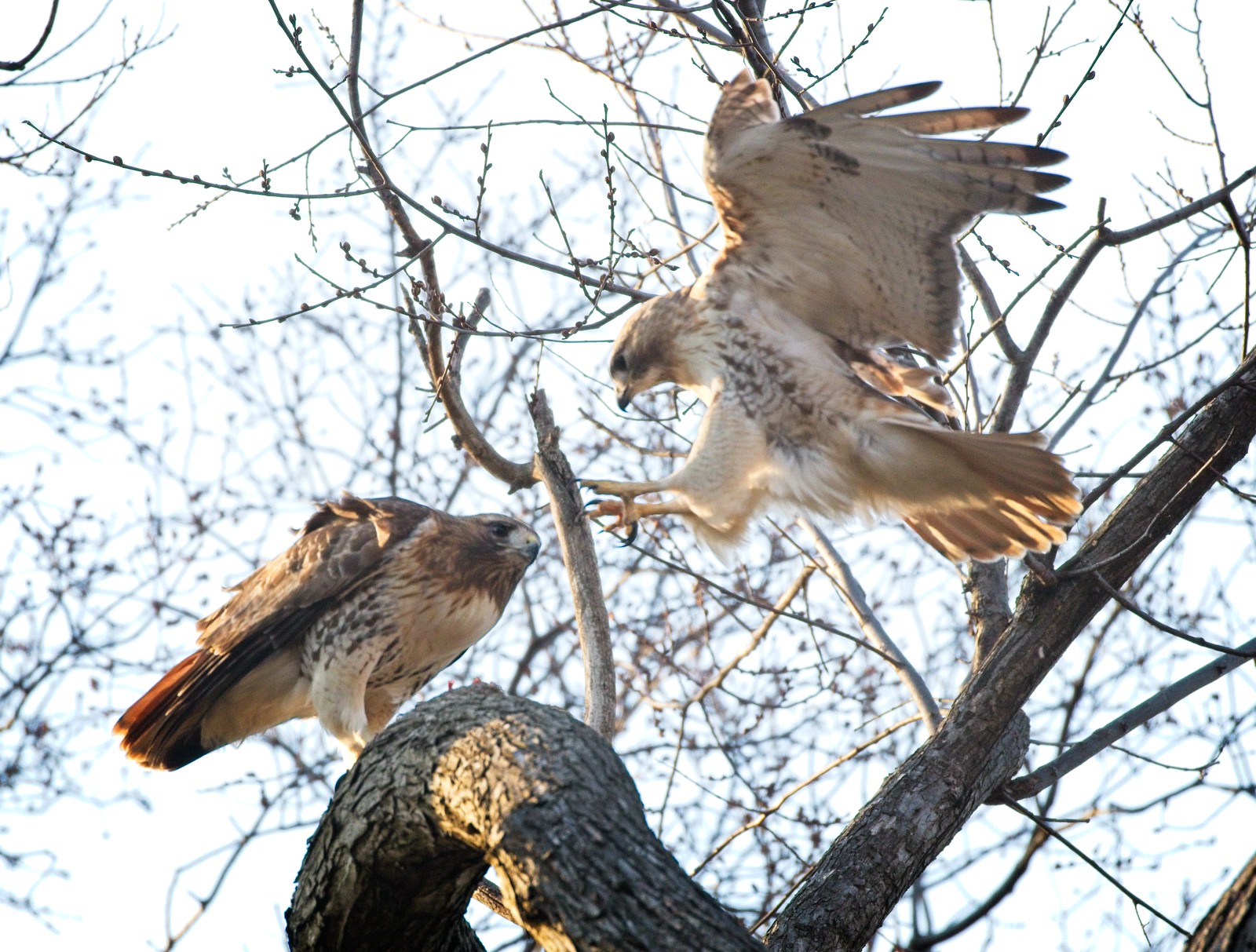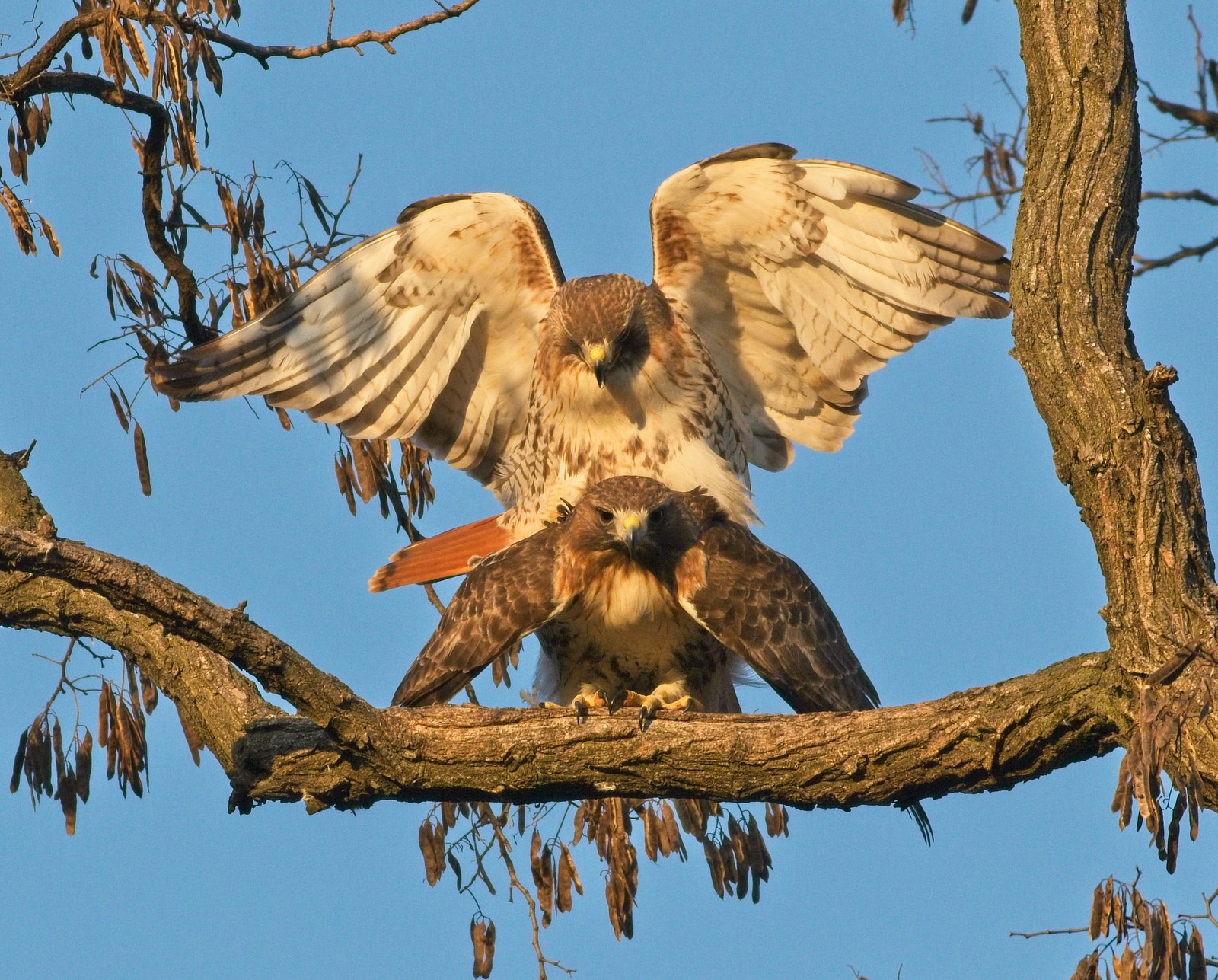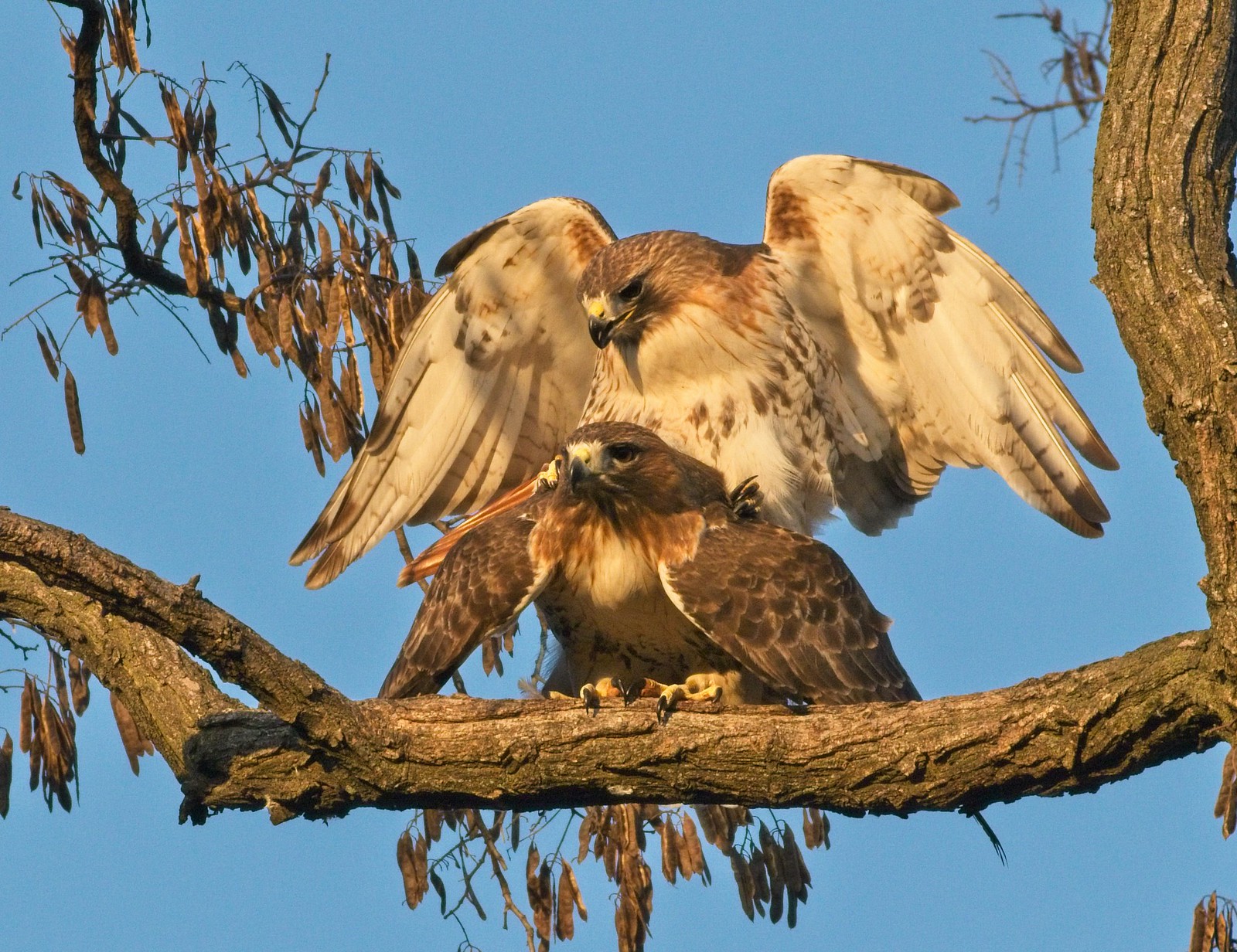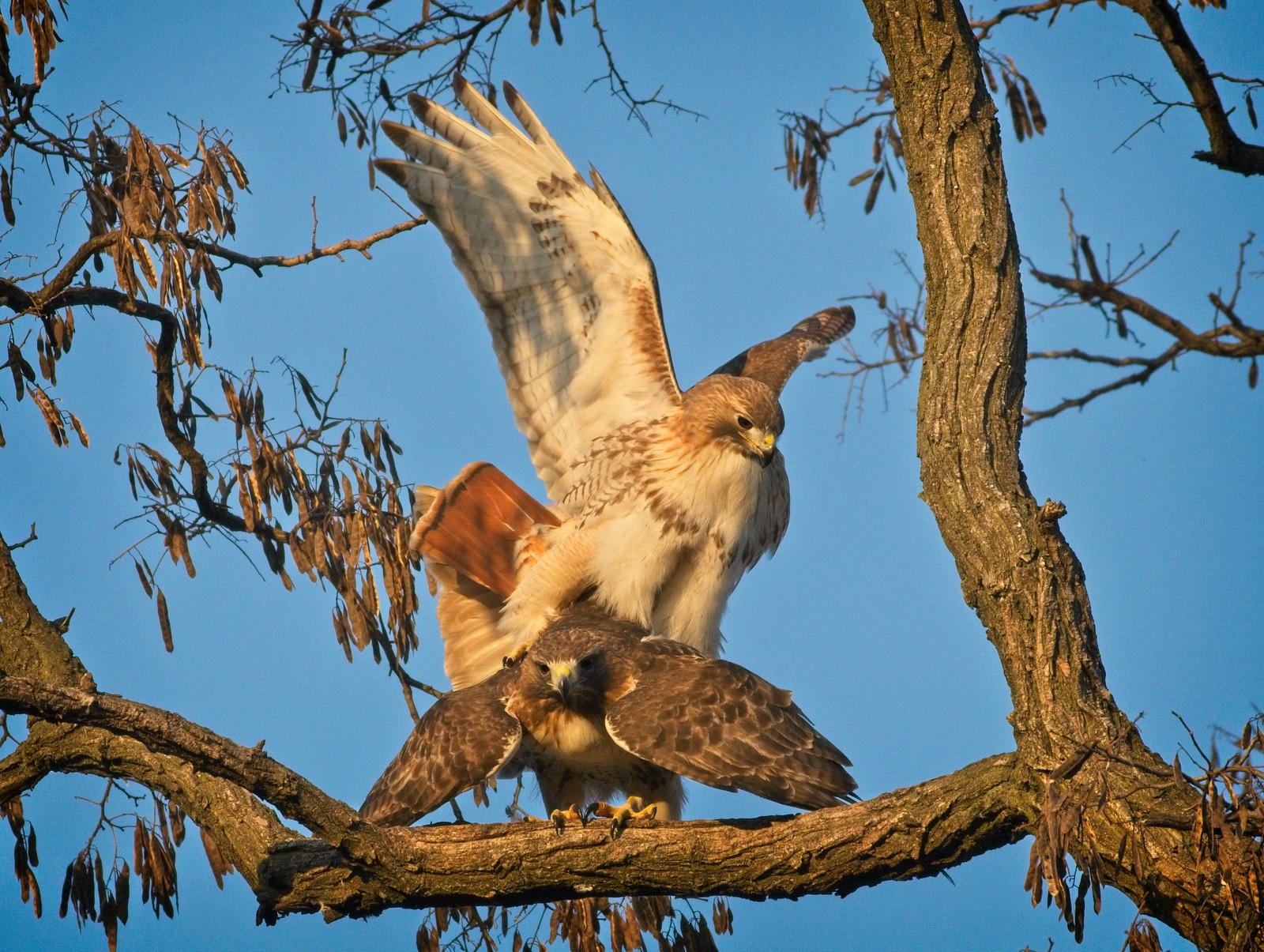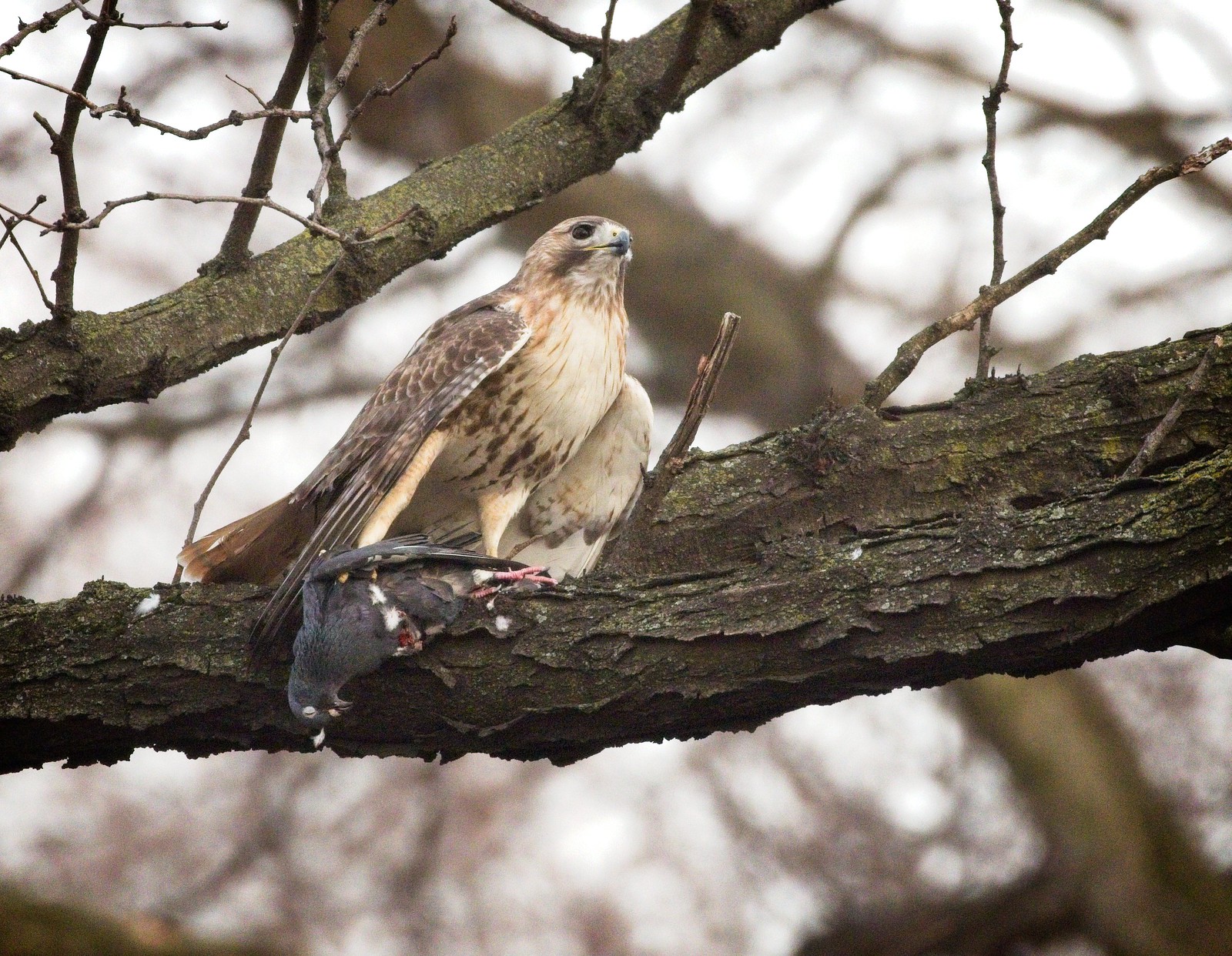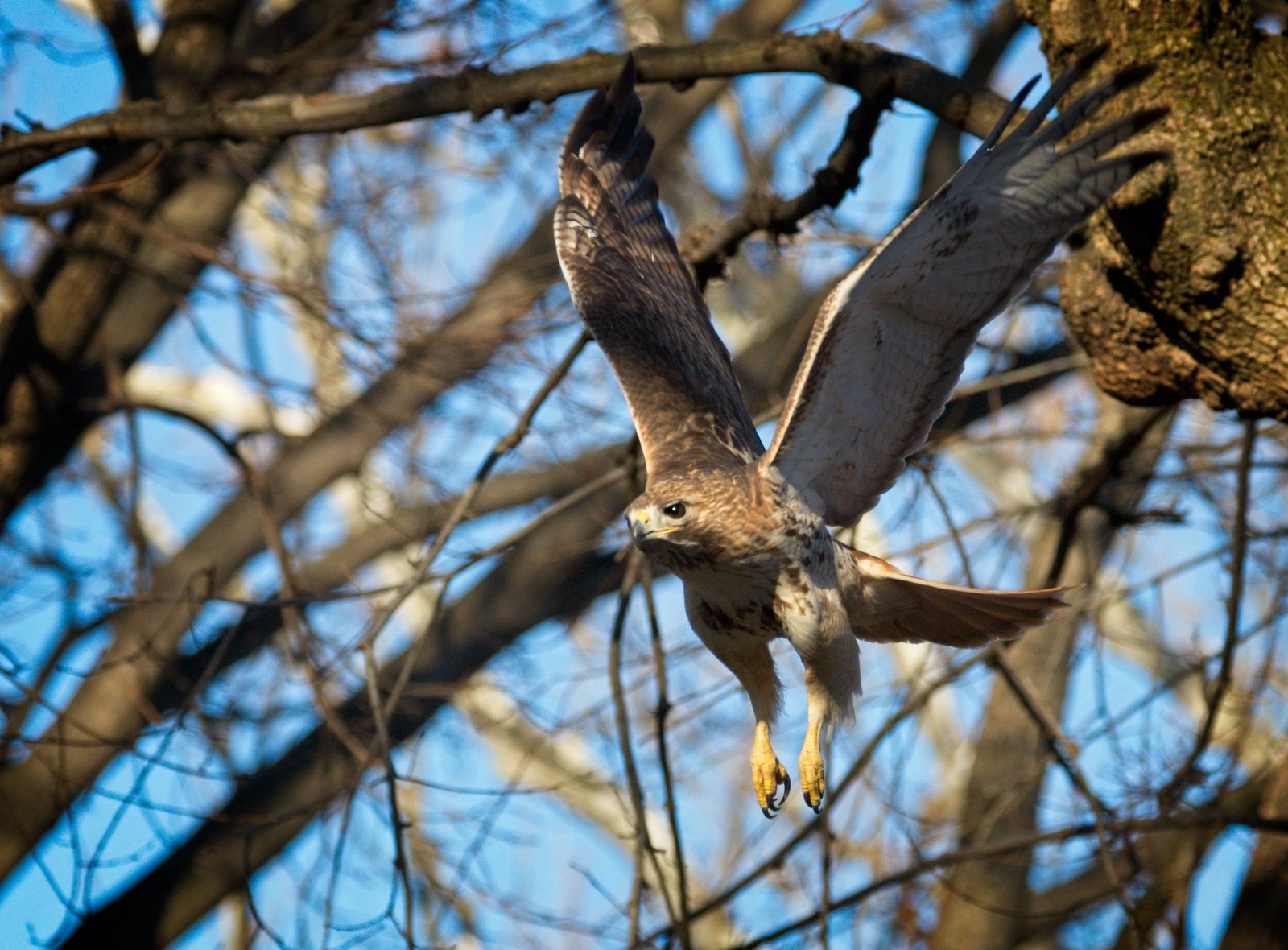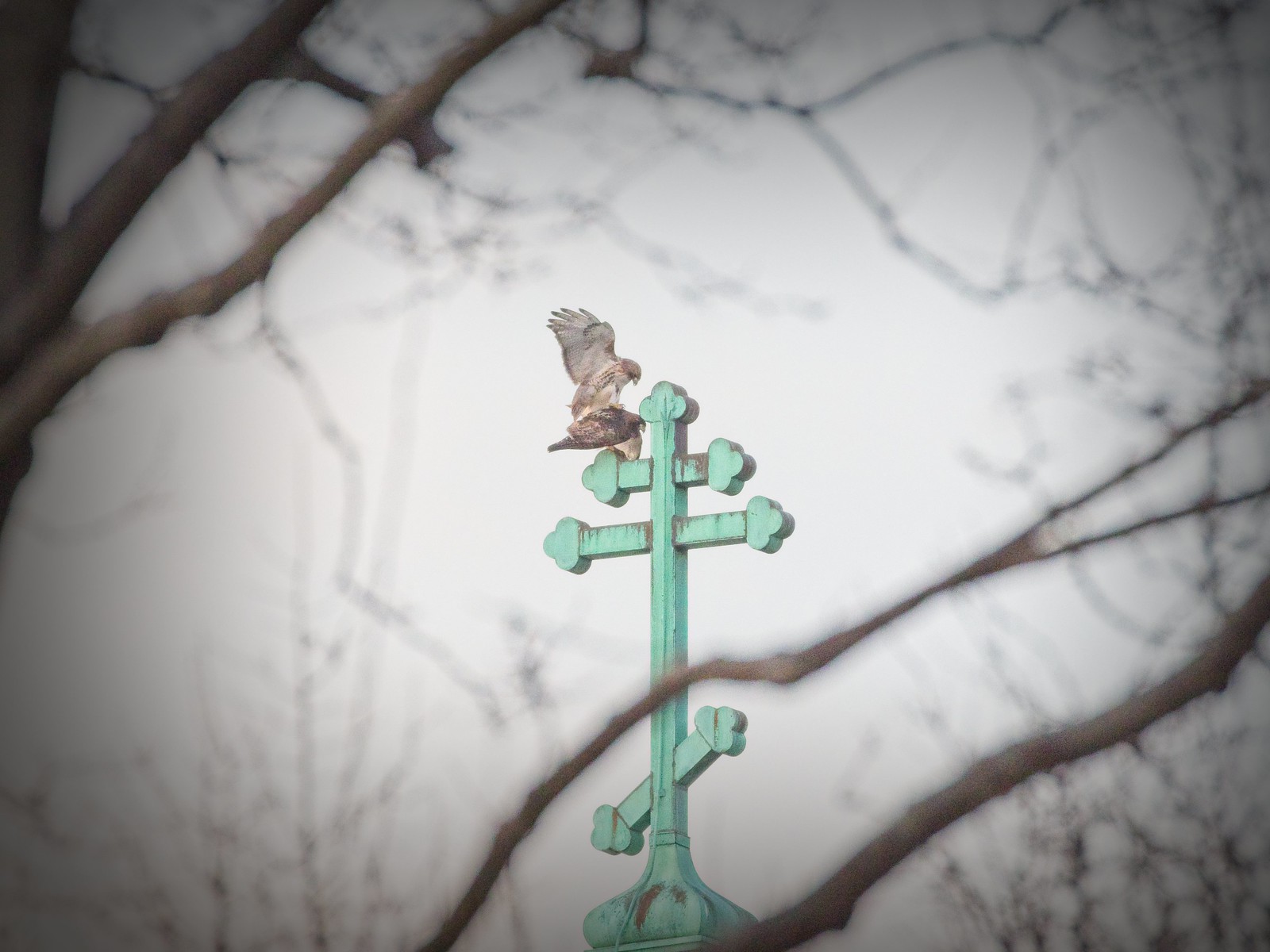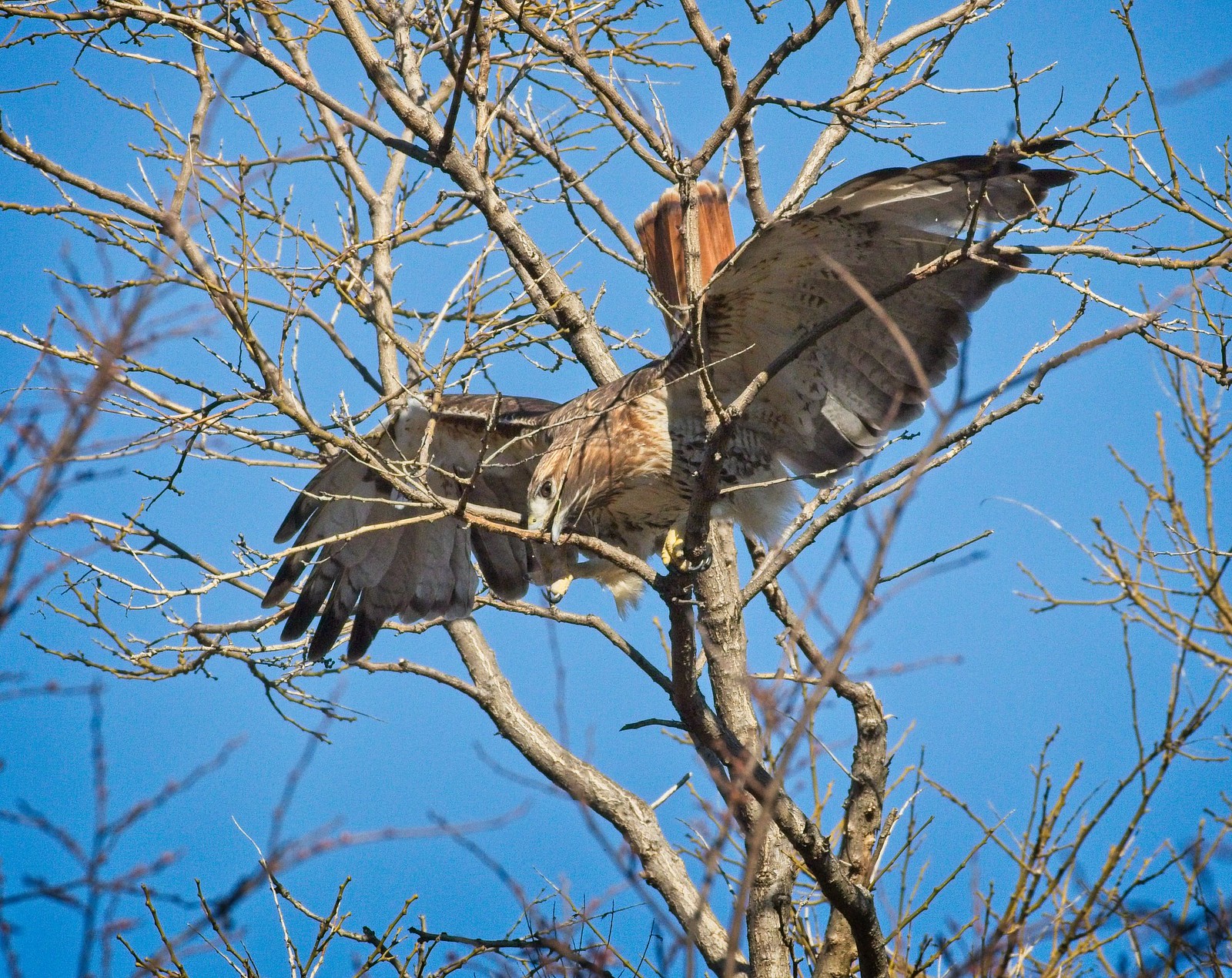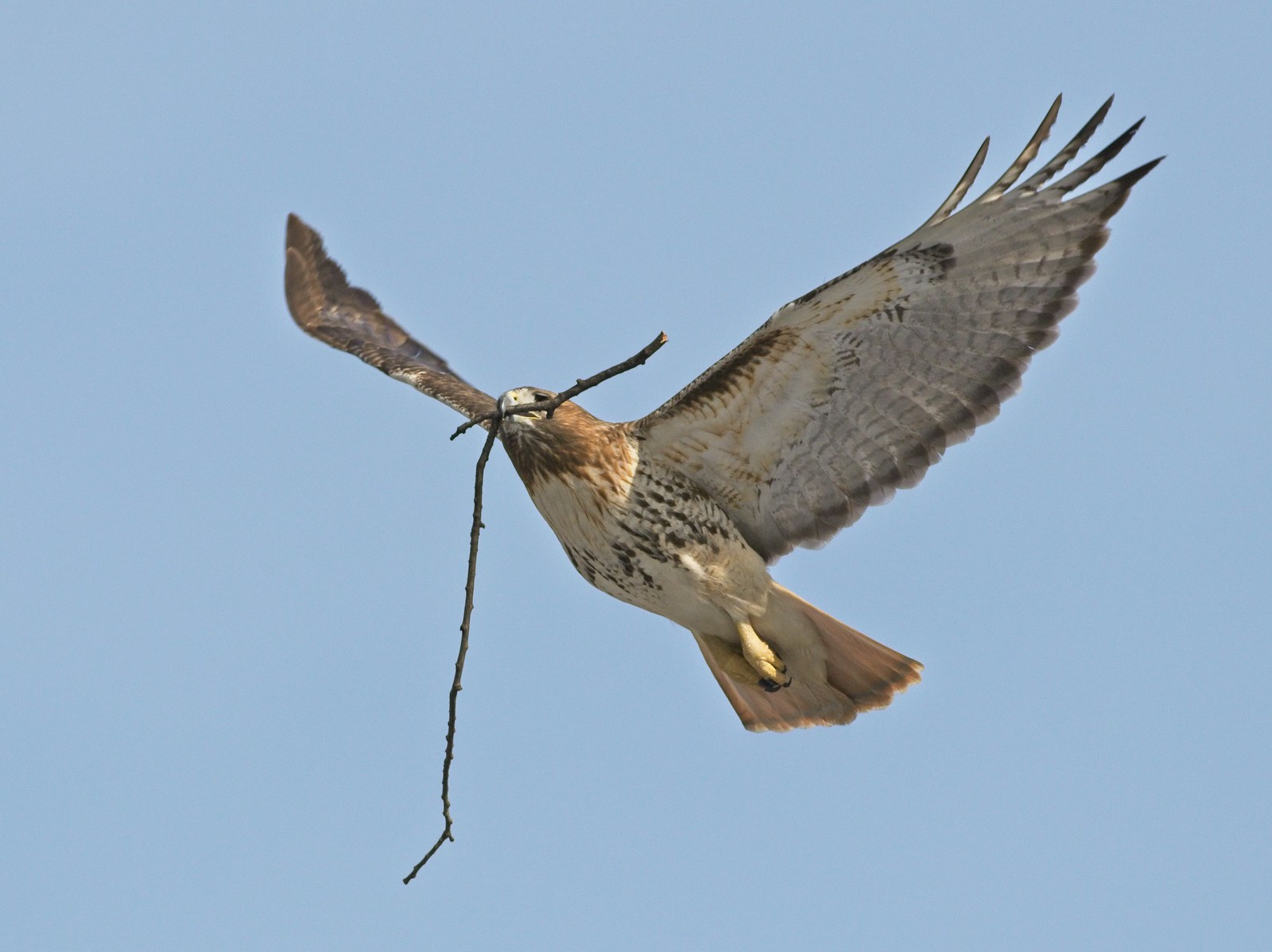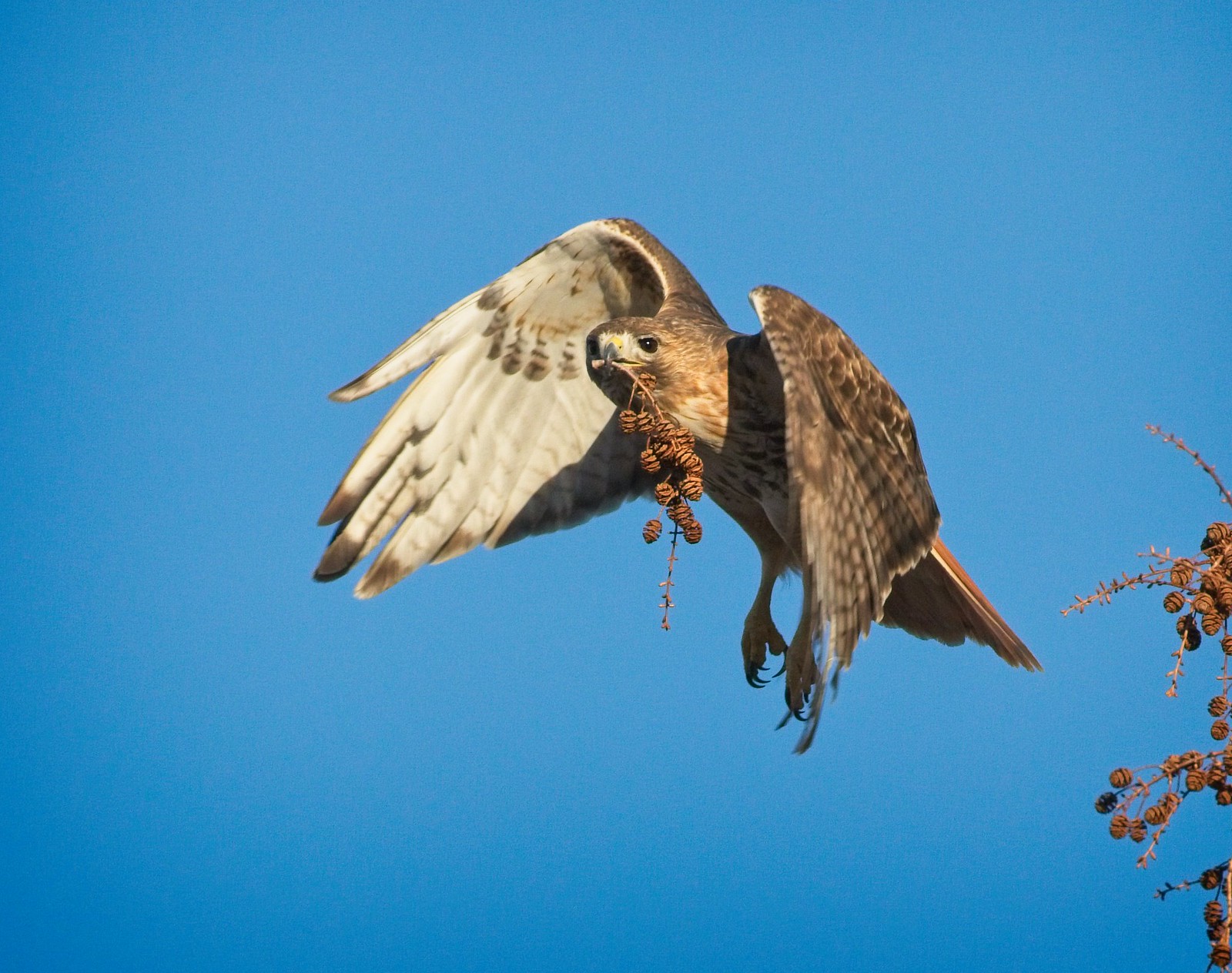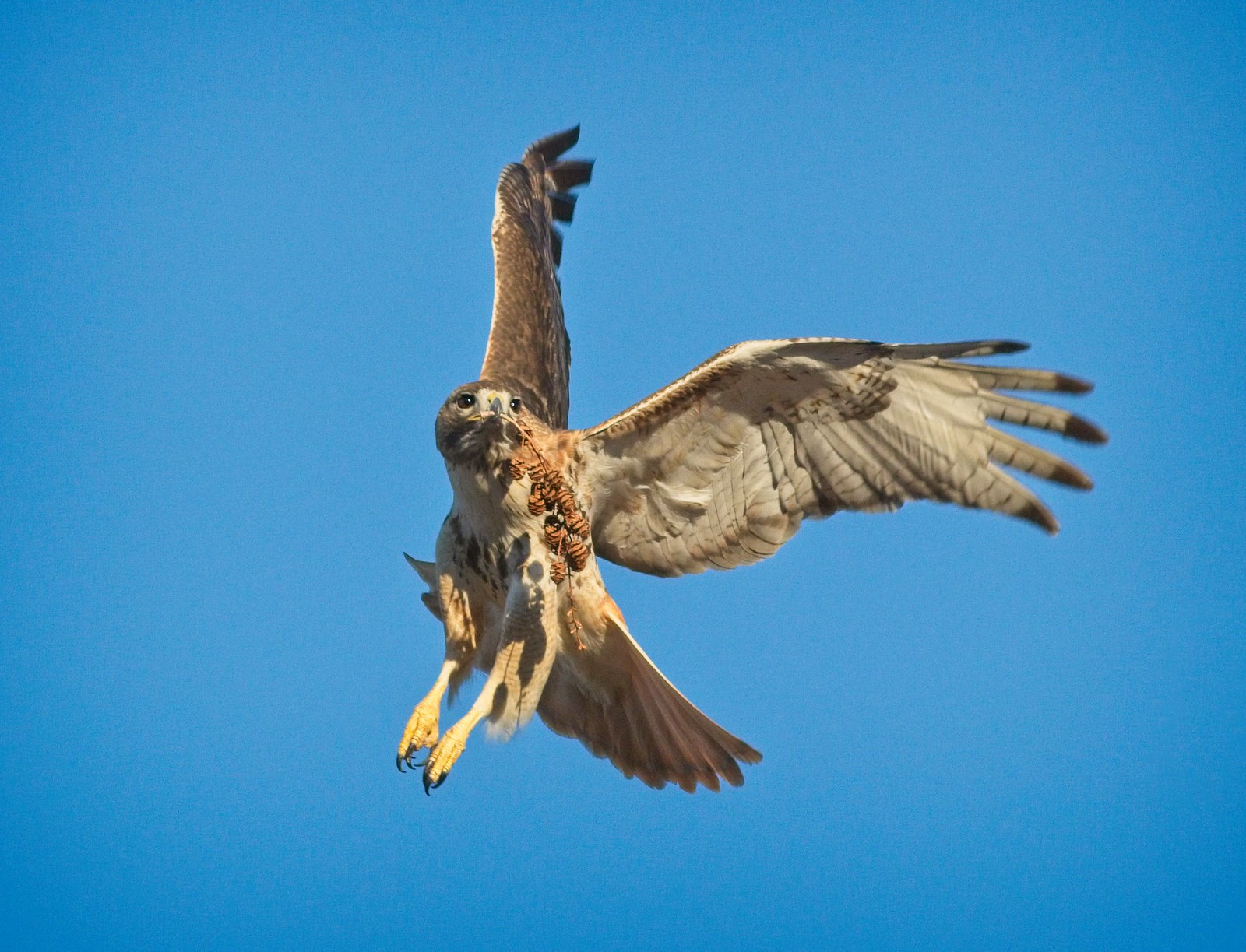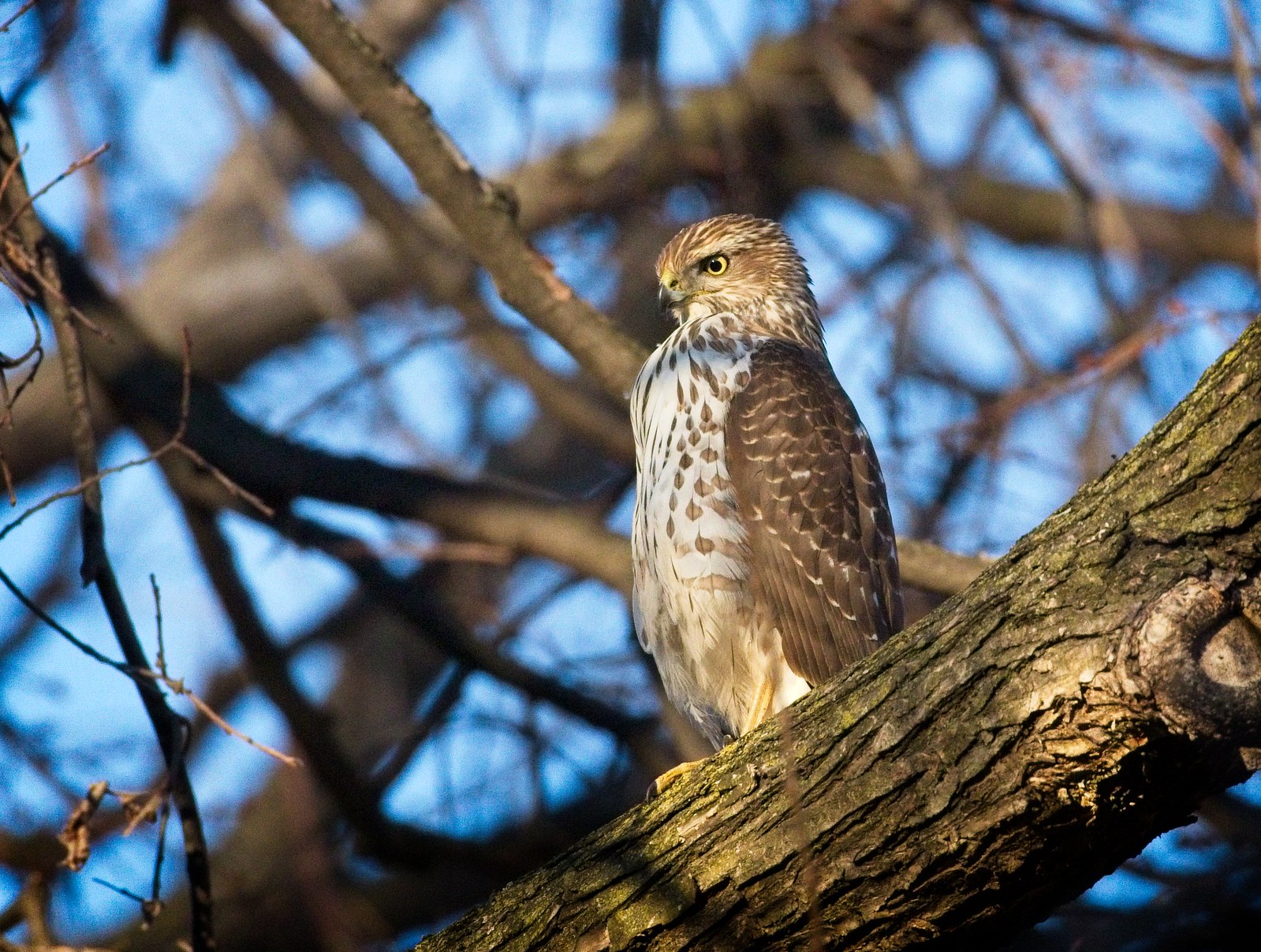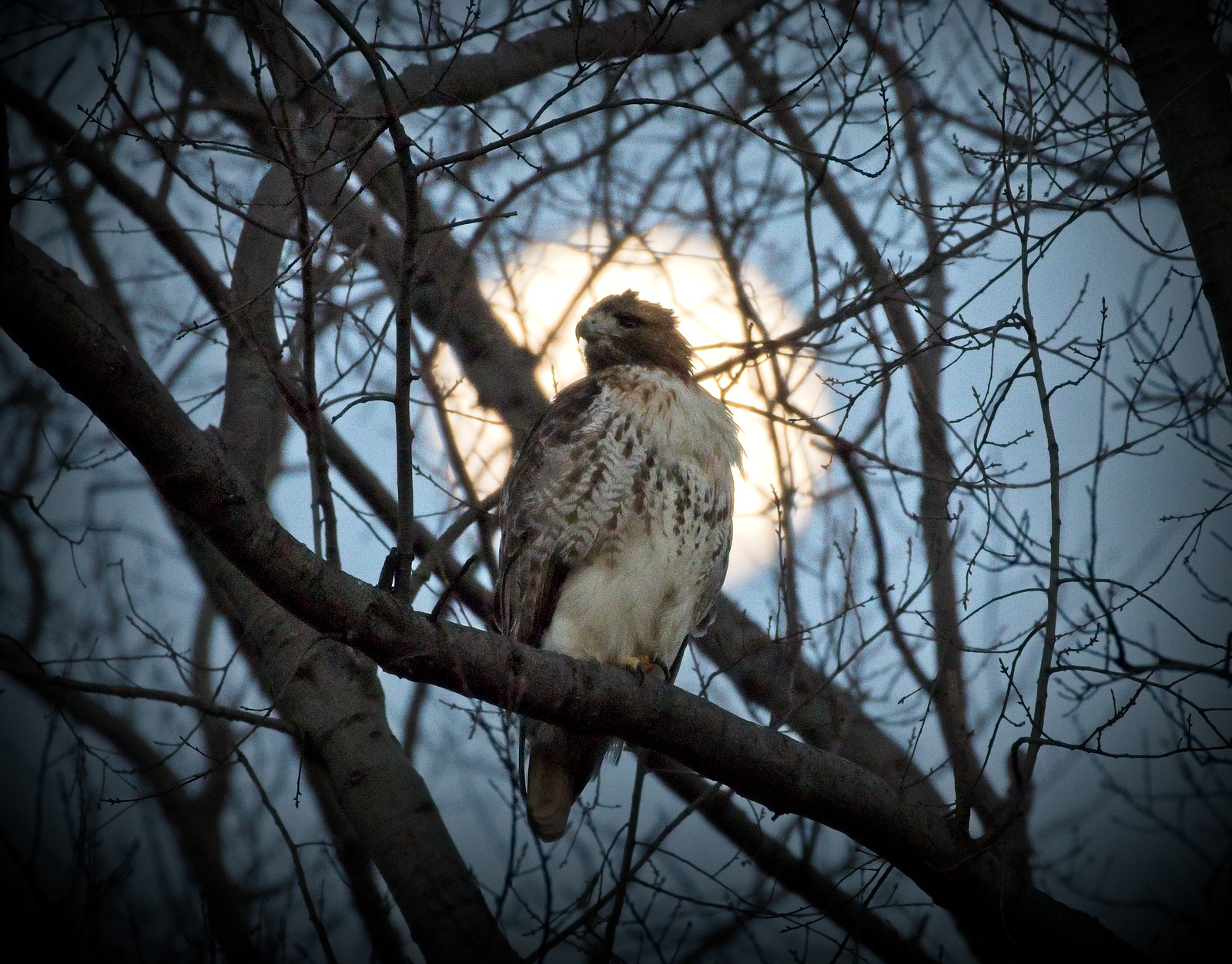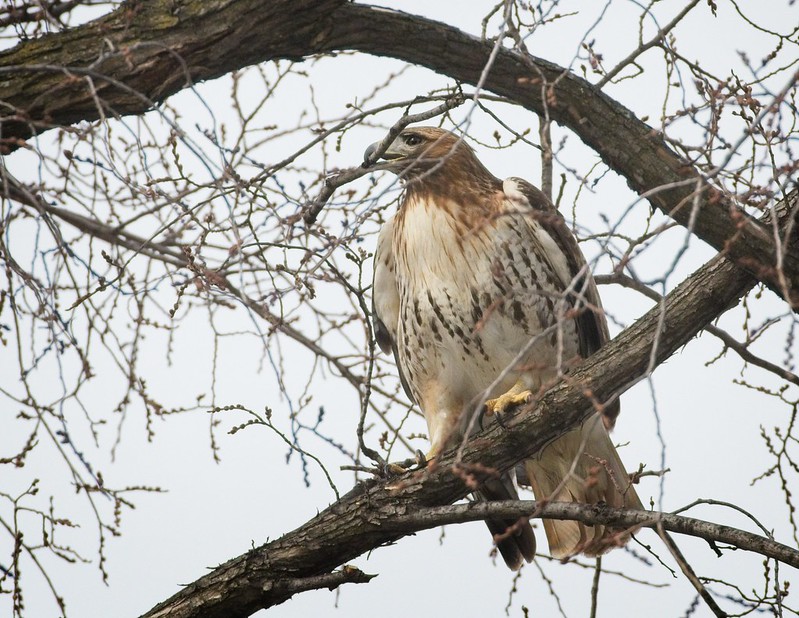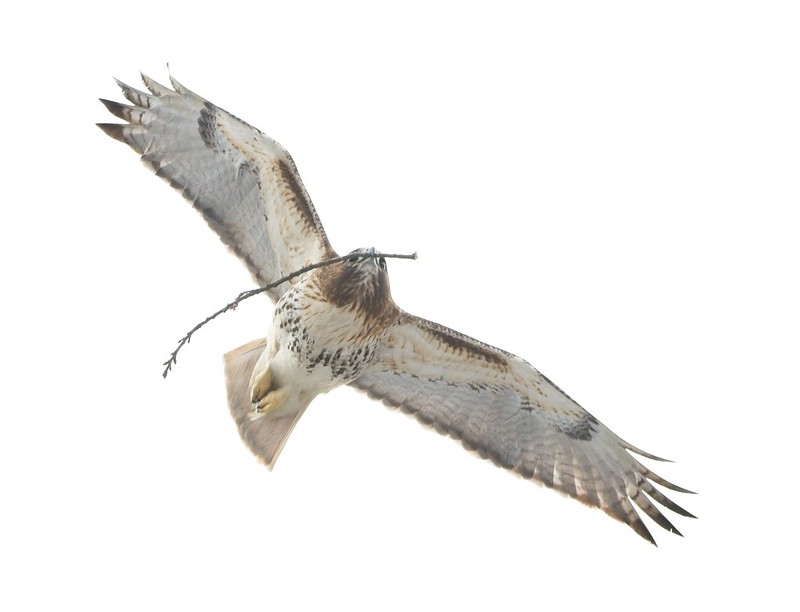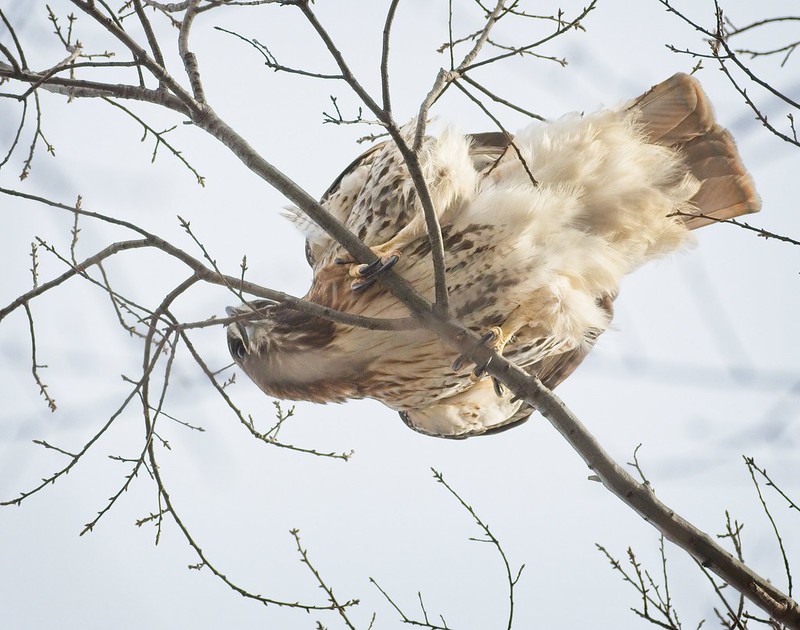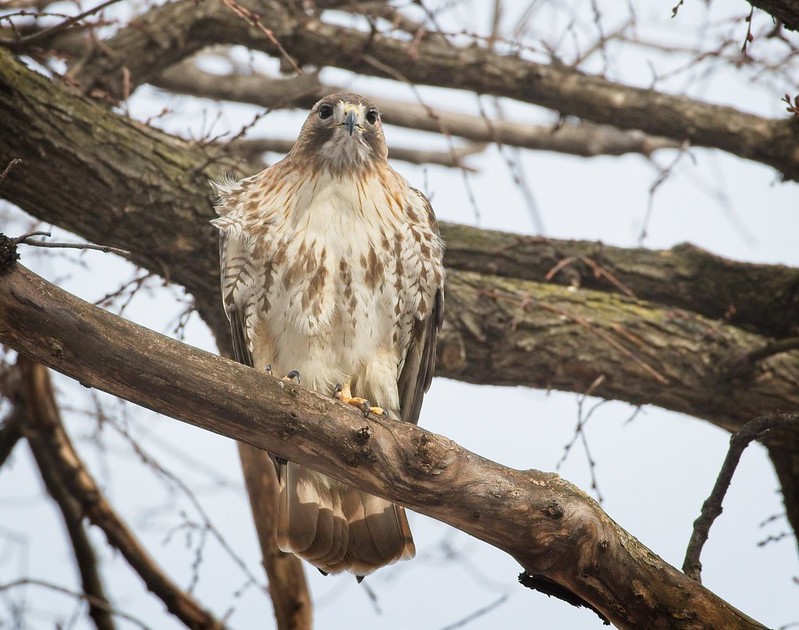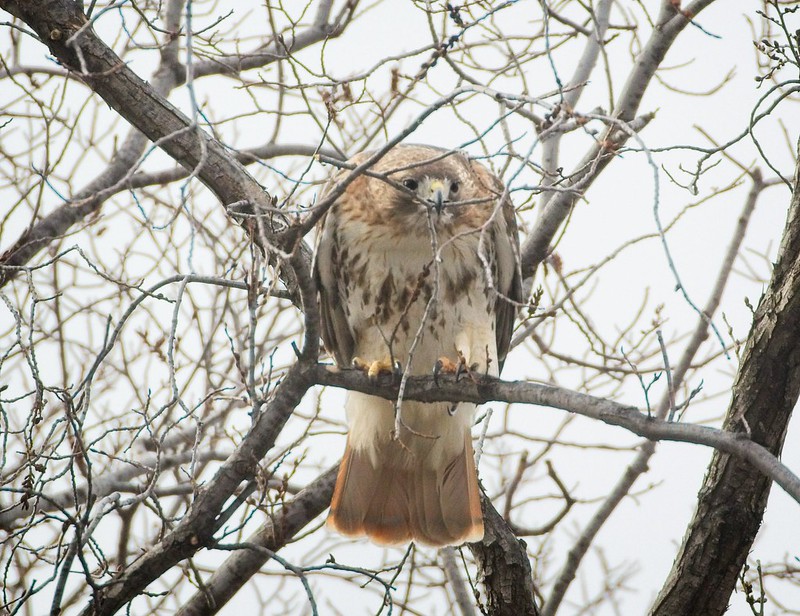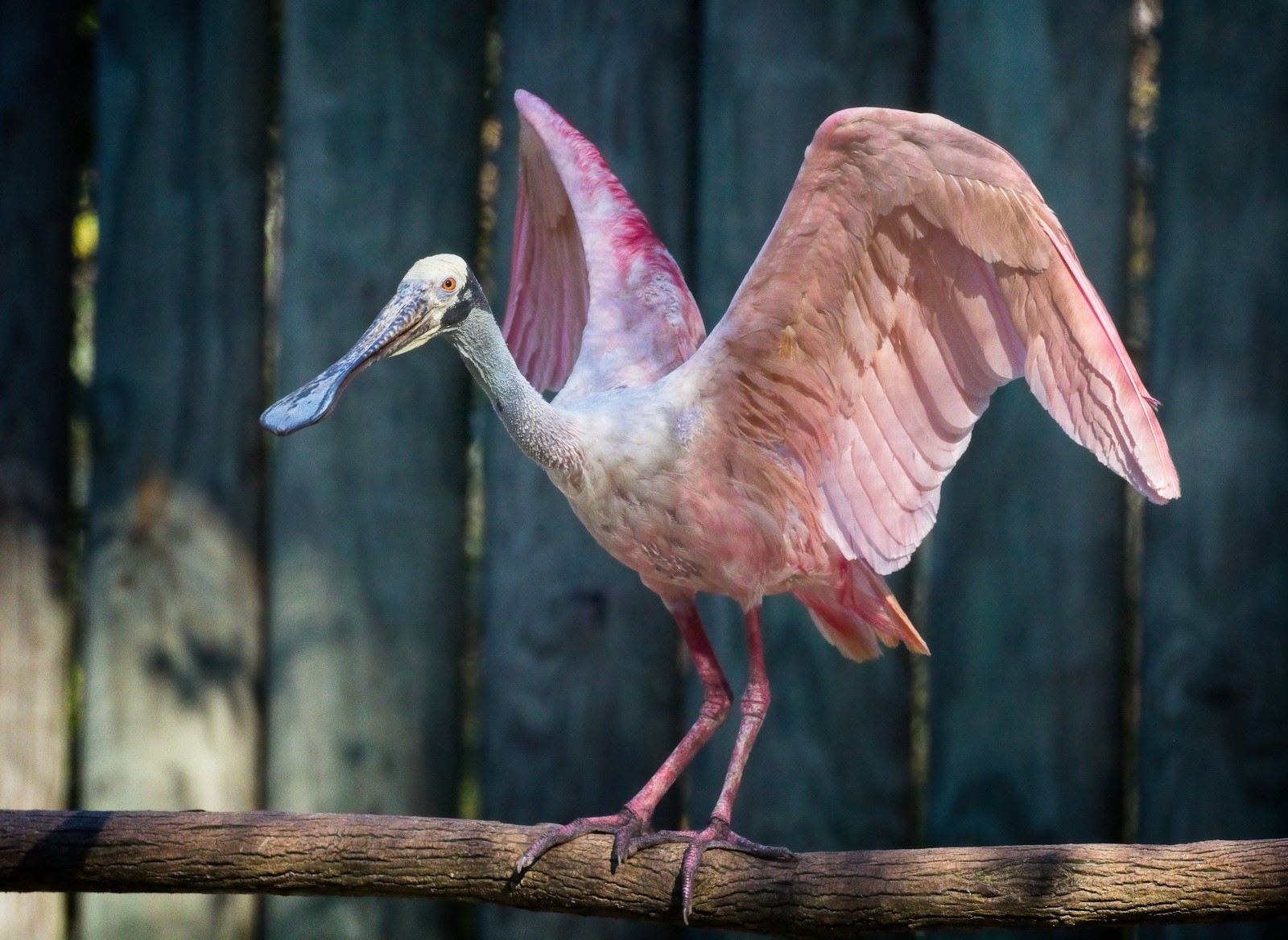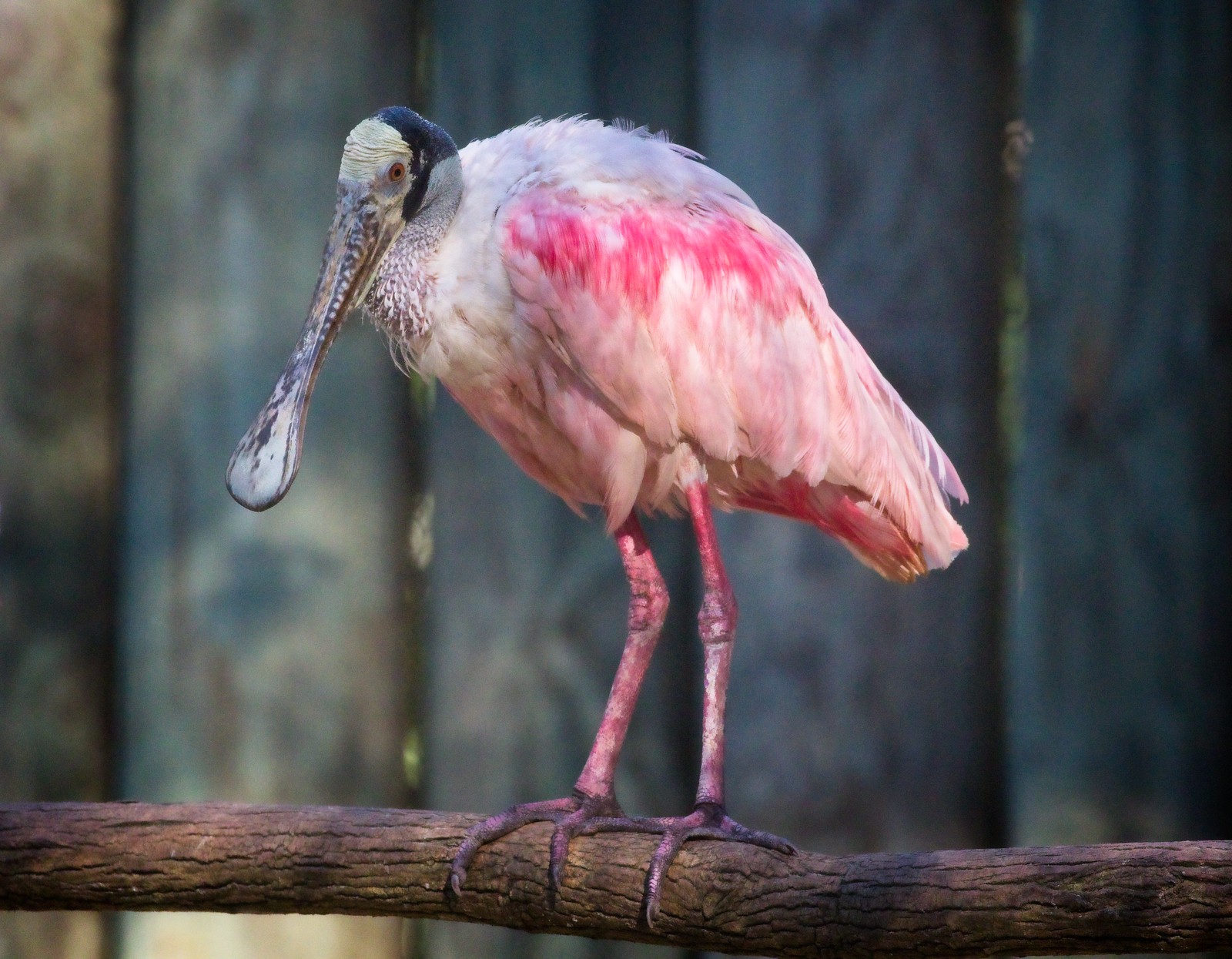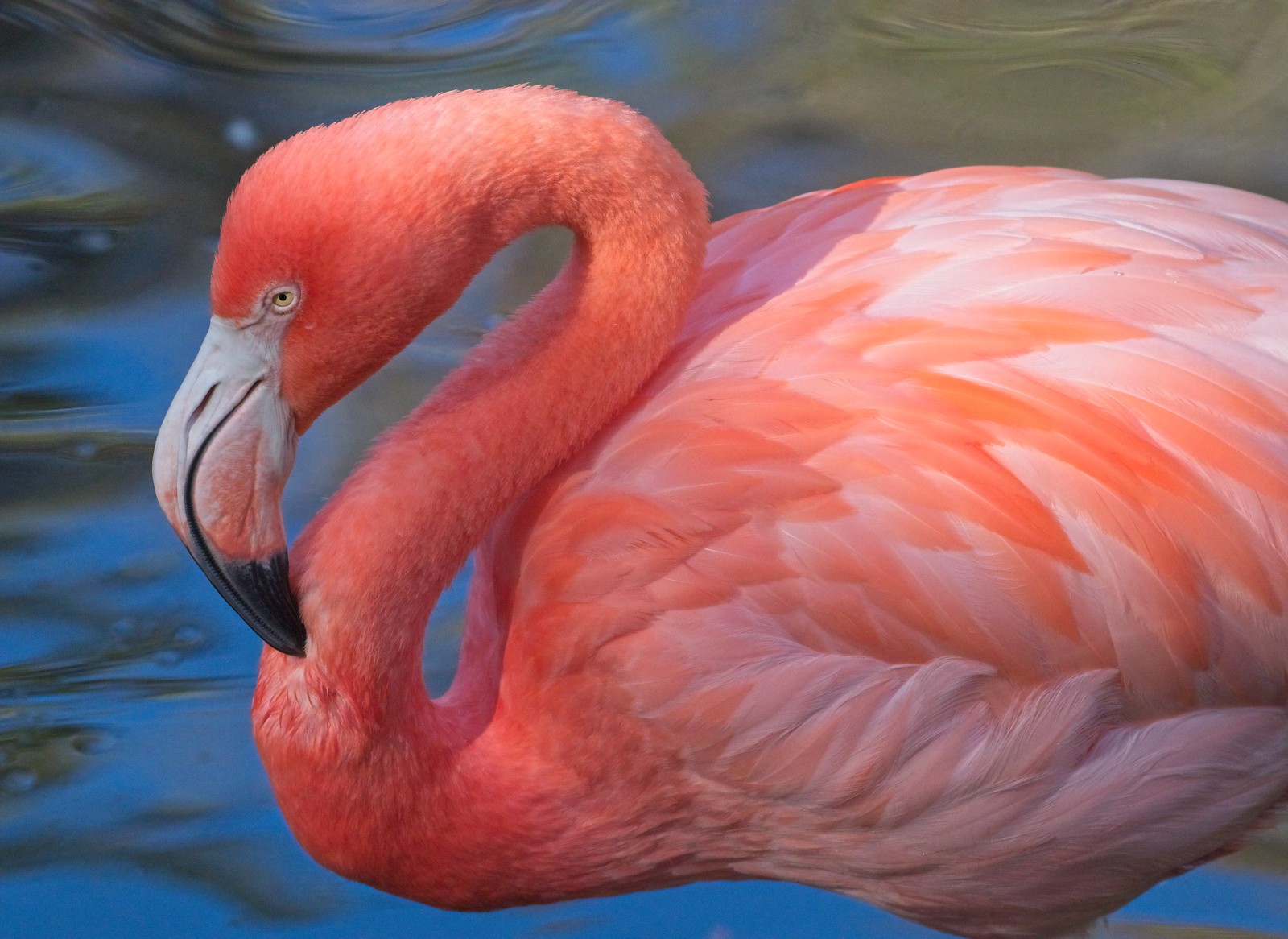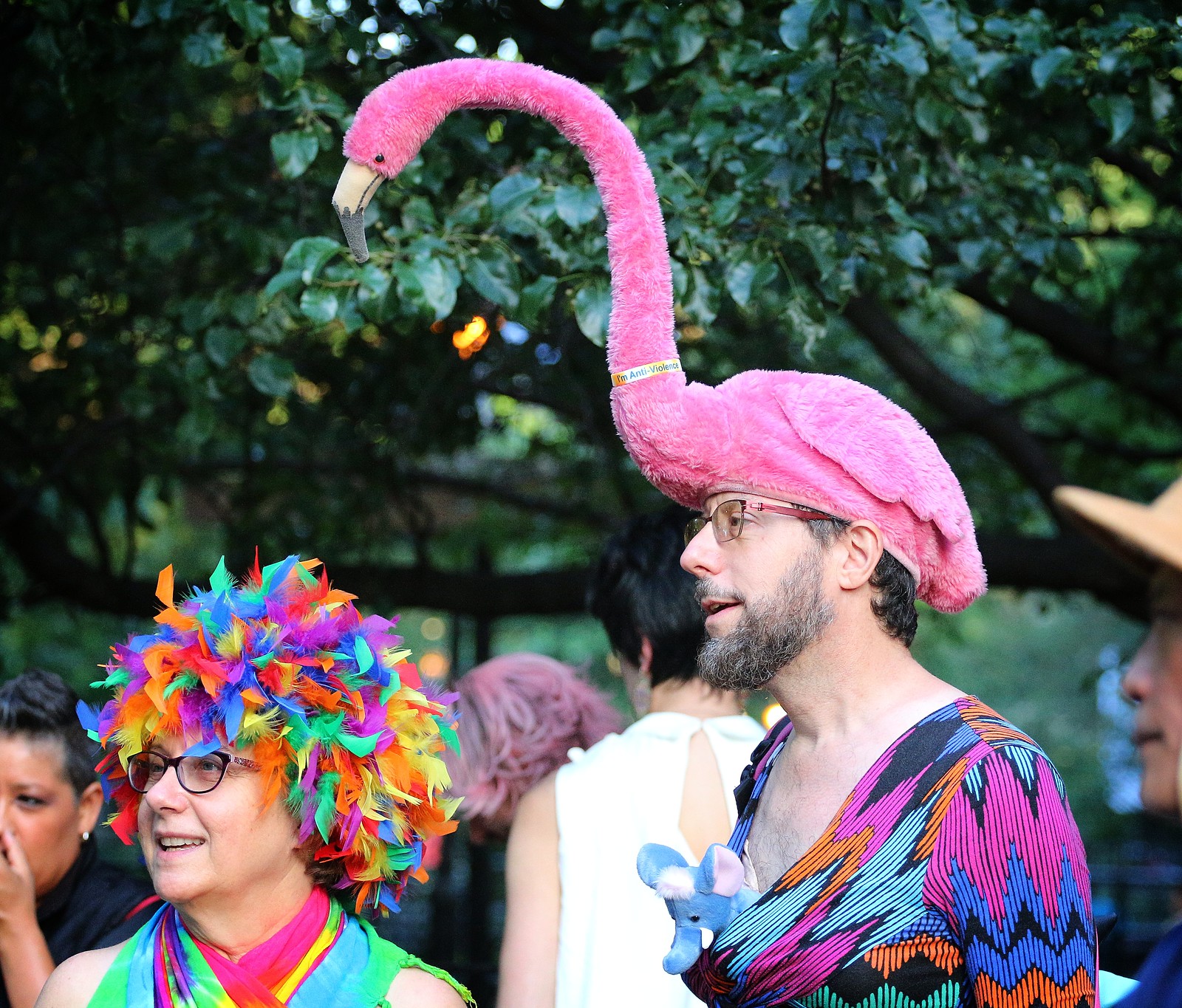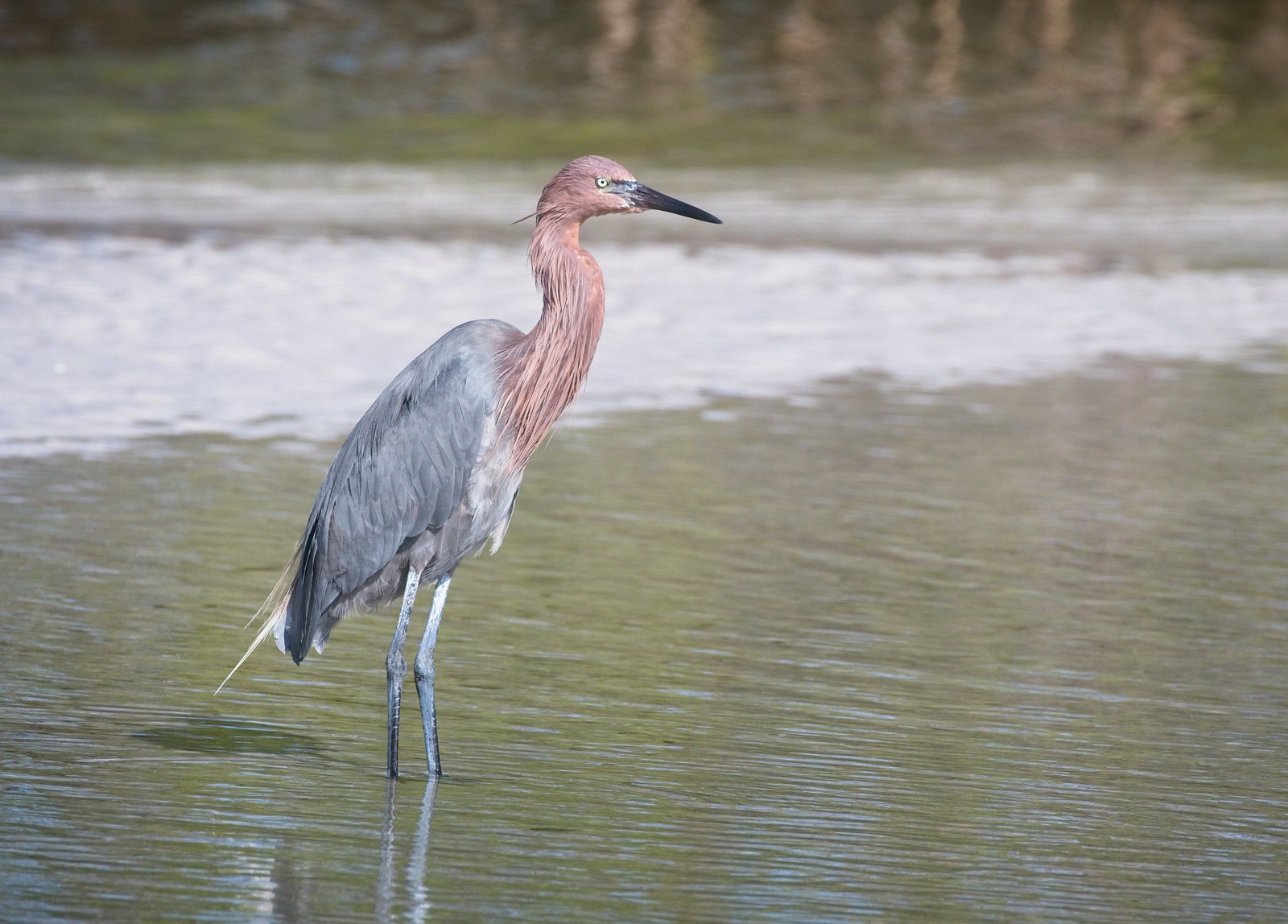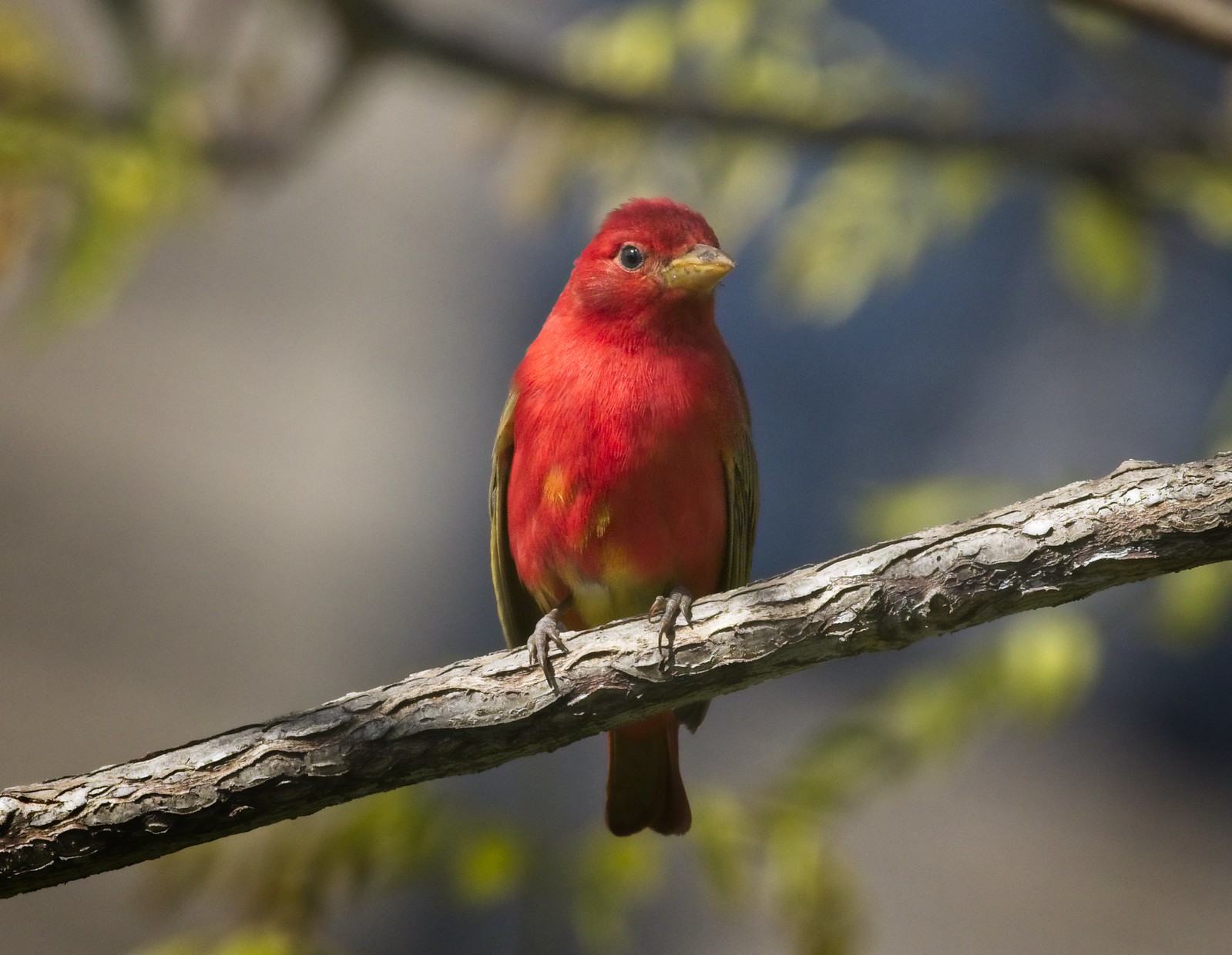We're still on egg watch for red-tails, Christo and Amelia, in Tompkins Square. The hawks appear to be pretty much done building their nest, so it's ready when ever they are.
I caught up with the pair a few times this last week and watched as they shared food, mated, and defended their territory against intruding young red-tails who are hanging around the area.
Below, Christo joins Amelia on a branch of one of the American Elms in the park.
We've enjoyed a few warm sunny days this week and I love how the late afternoon sun brings out the orange tones in the hawks' plumage. Below, Amelia rests on a locust branch as the sun begins to set.
She's joined by Christo, who swoops in for some mating.
Four seconds later:
That is Amelia on the left and Christo on the right. You can see Amelia is significantly larger than him, and her coloring is also a bit darker.
Amelia looks to me like she could lay an egg any minute. For those keeping track, below are egg-laying dates from the last seven years, going back to Christo's first nest on the Christodora building.
- 2020: March 4 - Christo and Amelia built their nest in a Honey Locust tree in Tompkins Square (same as this year)
- 2019: March 13 - Christo and Amelia built their nest in a Ginkgo tree in Tompkins Square
- 2018: April 20 - Christo and Amelia used the Ginkgo nest. The nesting season started late for the pair because Christo's first mate, Dora, had to be taken to a rehabber, and Amelia entered the scene in early April
- 2018: April 3 - Christo and Dora built their nest in the Ginkgo tree and they were seen brooding and doing a nest-exchange the day before Dora was rescued, indicating they had an egg
- 2017: March 14 - Christo and Dora built their nest in the Honey Locust tree (same as the current season)
- 2016: Around March 20 - Christo and Dora had their nest in the Ginkgo
- 2015: On or before March 26 - Christo and Dora hastily built their nest on a 12th floor air-conditioner of the Ageloff Towers at Avenue A and 3rd Street. This was after being evicted from the Christodora, where they attempted to rebuild their nest from the previous year
- 2014: March 29 - To the delight and surprise of everyone, Christo and Dora settled in the neighborhood and built their nest on a 7th floor air-conditioner of the Christodora at Avenue B and 9th Street.
Discounting the year 2018, when the situation was abnormal for the hawks, they seem to be on schedule for egg laying any time before the end of March.
In the mean time, we've been able to observe Christo catching food for Amelia, which is one way they bond. Christo's favorite food is rat, but Amelia prefers pigeon, so it's been interesting to watch Christo work hard to obtain his mate's favorite dinner. Although Christo is an expert at catching rats, he's not as skilled at catching pigeons. Amelia, however, excels at catching pigeons off rooftops, and seeing her in action is pretty spectacular.
The other evening, I watched Christo take a dive at some pigeons on a rooftop from his perch atop the cross of St Nicholas of Myra church at Avenue A and 10th Street. He failed his first attempt, but then set his sight on a target within the park.
Locking his gaze on the prey, he took off.
Christo shot down from the cross to the lawn north of the Temperance Fountain and nailed a pigeon on the ground.
After a few seconds, he took off with the pigeon and flew it to a tree on the central lawn.
He called to Amelia to come get her dinner, but she didn't immediately respond.
Christo took the pigeon to several different trees within the park, continuing to call for Amelia, but she didn't answer. After a while, he started to eat the pigeon himself.
Christo on his flag pole throne:
Christo posing in the late afternoon sun:
I still get excited when Christo flies right past me at eye-level.
As the sun went down, Christo hunted for rats from atop one of the street lamps in the park. He usually makes one last dinner run before dark.
Just as I was leaving the park for the night, I saw Amelia land on the cross of St Nicholas out of the corner of my eye. Sure enough, Christo swooped in to mate with her. I was two blocks away when this happened.
Three seconds later: 😄
